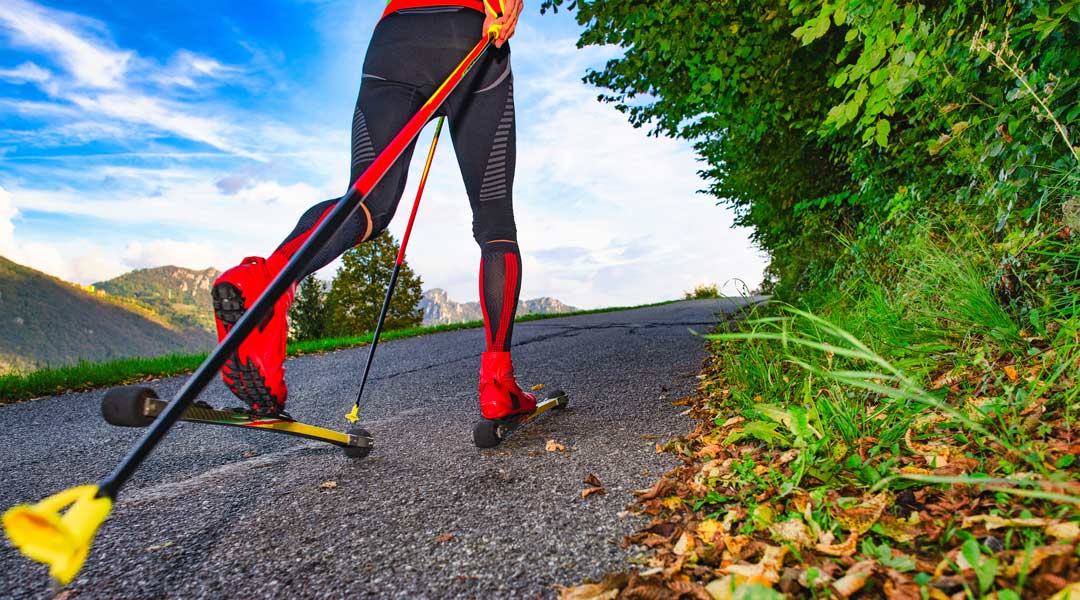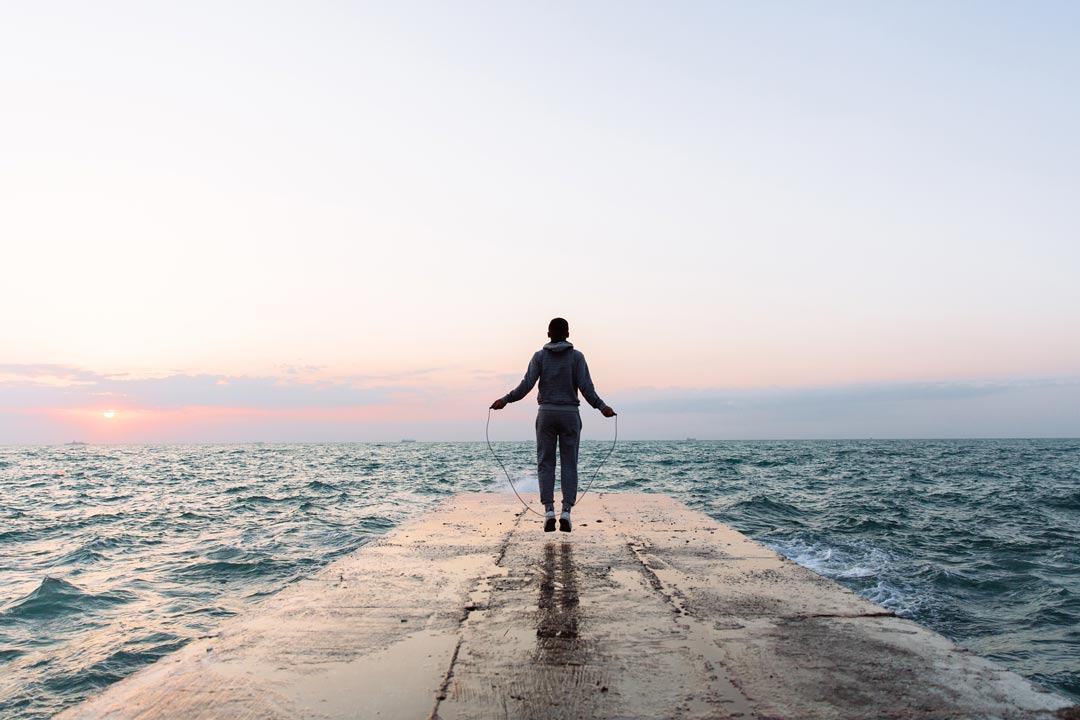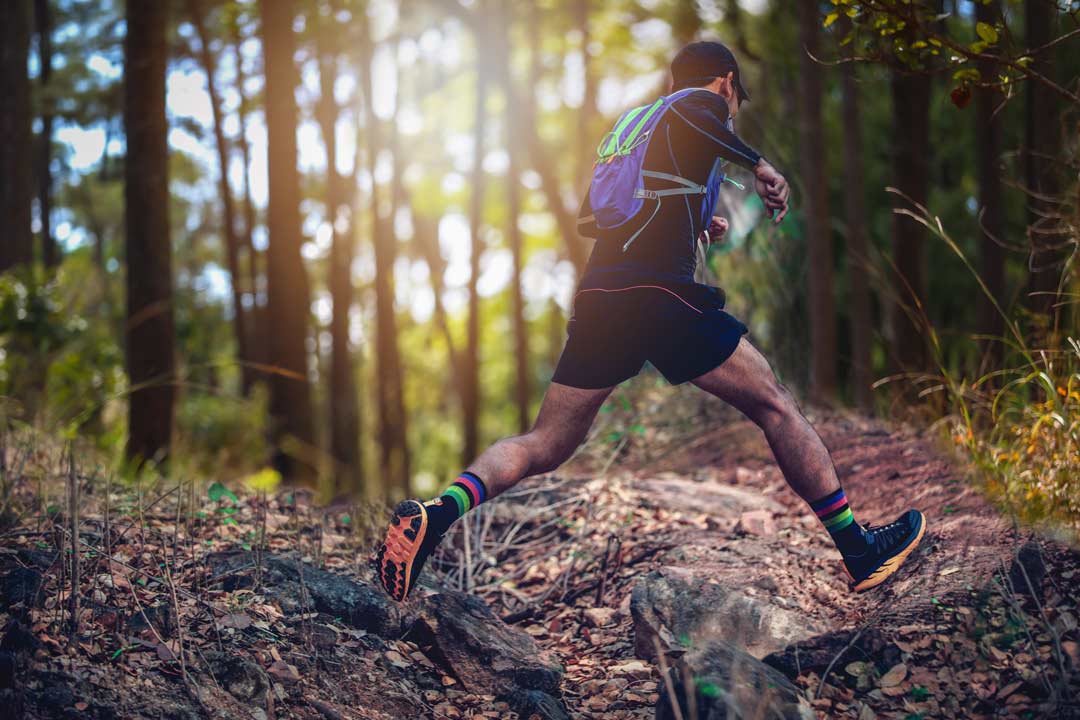Just because the snow has melted doesn’t mean your snow legs should.
We get it. When the last patch of snow disappears and the sun starts winning the battle, it’s tempting to stash your snowshoes in the basement and declare “training complete” until next season. But here’s the thing: snowshoeing is a full-body workout wrapped in an epic adventure, and if you don’t keep those muscles firing in the off season, your first day back on the trails might feel less like a winter wonderland and more like a personal episode of Survivor.
Off-season training isn’t about becoming a gym rat or adding hours to your already-busy week. It’s about staying mobile, strong and ready to glide (okay… stomp) through fresh powder without pulling a muscle or running out of steam halfway through your favorite loop. A little smart movement now can mean:
- Fewer injuries when the season starts.
- More stamina for those long, beautiful treks.
- Legs of steel that laugh in the face of deep drifts.
And trust us. It’s worth it. Snowshoeing can burn 45 percent more calories than just walking, making it one of the most effective winter cardio workouts out there. If you want to enjoy every step and not spend the first few outings gasping for air, a bit of off-season prep is your secret weapon.
At Snowfoot, we believe the spring, summer and fall is prime time to prep for your best snowshoe season ever. Think of us as your training partner. We’re here to guide you through the exercises that actually work.
So, ready to keep your snow legs in peak form? Let’s go.
Know Thy Sport: What Muscles Does Snowshoeing Use?
Before we jump into exercises, let’s talk about what’s actually working when you’re out there crunching through snow. Snowshoeing may look like a serene winter stroll, but under the surface it’s a full-body workout, and every muscle group is getting in on the action.
A Very Brief, Very Unofficial Anatomy Lesson:
Imagine you’re trekking through fresh powder. You lift one leg high, plant your snowshoe, push off, balance, and repeat, all while bracing against wind, uneven terrain and possibly your friend’s questionable route choices.
Here’s what’s working overtime:
Glutes
Your powerhouse muscles. Every uphill step and snowbank scramble starts here.
Quads
Front of the thighs. Essential for lifting and propelling your legs through deep snow.
Hamstrings
Back of the thighs. Help with balance and the push-off phase of your stride.
Calves
Engaged constantly to stabilize your ankle with each uneven step.
Hip flexors
These muscles help lift your legs high with each stride — key when you’re in snow up to your knees.
Core
Your stabilizer. Keeps you upright on uneven terrain and helps manage weight shifts with every step.
Stabilizers
Ankles, knees and hips all rely on small stabilizing muscles to keep you from face-planting into a snowbank.
And the forgotten hero: grip strength
Using poles? You’ll need endurance in your hands and forearms to keep your grip strong through hours of trekking, especially when those poles are sinking into awkward angles.
Bottom line: Snowshoeing works more muscle groups than you might think. The more you can prepare these areas in the off season, the more you’ll glide through snow rather than battle against it.
Off-Season Snowshoe Exercises That Actually Work

Now that you know which muscles are on call for snowshoe season, let’s get them ready. You don’t need to live in the gym to stay in shape. A few smart exercises can make a big difference when the first snowfall hits.
We’ve grouped them here so you can mix and match based on your schedule and fitness level. The goal is simple: stay strong, balanced and ready to tackle the trails.
Leg Power & Endurance
Squats
A classic. Bodyweight squats work fine, but if you can add a dumbbell or two, even better. Focus on depth — you want those legs ready to drive through deep snow.
Lunges
Forward, reverse and side lunges all have value. Side lunges in particular help build lateral strength, which comes in handy when snow shifts underfoot.
Step-ups
Find a sturdy box or bench about knee height. Drive through your heel as you step up. Imagine you’re climbing a snowbank every time.
Core & stability
Planks
Hold a solid plank position for 30 seconds to a minute. Keep your body straight. It’s less glamorous than a six-pack selfie, but core endurance is crucial on uneven ground.
Bird dogs
From hands and knees, extend opposite arm and leg while keeping your core tight. Slow and controlled is better than fast and wobbly.
Single-leg deadlifts
Balance plus hamstring strength. Hold a weight in one hand, hinge at the hips and extend your other leg behind you. If you can do these well, you’ll feel more stable on any trail.
Cardiovascular Conditioning
Trail running or uphill hiking
Nothing beats real-world training. Running or hiking on uneven terrain builds endurance and gets your stabilizers firing.
HIIT workouts
Short bursts of high-intensity effort mimic the stop-start nature of snowshoeing. Think 20 seconds of sprinting, 40 seconds of recovery.
Cycling
Great for building leg endurance with low impact. Bonus if you ride hills.
Grip & Pole Strength
Farmer’s carries
Pick up heavy weights and walk. Simple but highly effective for building grip and core strength.
Hanging from a bar
Work up to hanging for 30 seconds or more. Strong hands and forearms will help you keep a solid grip on your poles all day.
Wrist curls and extensions
Don’t skip the small stuff. A few sets of wrist curls and extensions can help prevent fatigue during long outings.
Snowshoe Training Pitfalls to Avoid
Even great plans can backfire without a little care. Watch out for:
- Too much too fast: If you haven’t worked out in a while, ramp up gradually. No need to win week one.
- Skipping mobility: Tight hips, ankles and shoulders can mess with your stride and posture. Stretch, move and recover.
- Neglecting grip and balance: Snowshoeing isn’t just a leg show. Don’t skip the grip strength and core stability work.
- Repetitive stress: Vary your movements and mix in low-impact options to avoid overuse.
Fun Cross-Training Ideas (So You Don’t Get Bored)

Let’s be honest. No one gets excited about doing week eight of the same squat circuit. Cross-training is your best defense against boredom and burnout. It keeps things fresh, challenges new muscle groups and adds just enough variety to trick your brain into enjoying the process.
And here’s the secret: plenty of off-season activities double as stealth snowshoe prep.
Paddleboarding helps you build core and leg stability while soaking up the sun. Balancing on a moving surface conditions you for uneven winter terrain without the cold. Rock climbing develops grip strength, core control and leg power while sharpening your focus and movement efficiency.
For a rhythm-based challenge, try dance classes. They improve coordination and footwork, both of which help on narrow trails or sketchy descents. If you want to simulate snow resistance, head to your nearest beach and go hiking in sand. Your calves may hate you, but your snow legs will thank you later.
To really dial in winter readiness, consider roller skiing. It’s intense, technical and surprisingly satisfying. You’ll strengthen your legs, arms and core while learning to move efficiently with poles. Cycling and inline skating are great for cardio and leg strength, and they challenge your balance in ways that carry over to snowshoeing.
If you’re near stairs or a stadium, get into stair workouts. They build climbing power and endurance. Add a backpack for extra training value. And for those who love the trails year-round, trail running with poles is about as close as you can get to summer snowshoeing.
Don’t forget about recovery and durability. Yoga and mobility routines improve flexibility and balance, reduce injury risk and help your body move more efficiently.
The key is to find what keeps you moving. It doesn’t have to feel like training to work like training.
Building a Simple Off-Season Snowshoe Training Plan

If your goal is to hit the snow with confidence, not collapse, you’ll want more than just a couple hikes and a stretch. This four-week training plan is built to gradually increase your strength, stamina and balance so your first snowshoe of the season feels like a homecoming and not a rude awakening.
Aim for five days of training per week: three strength-focused sessions, one cardio endurance day and one cross-training day. We’ve also built in one mobility-focused active recovery day and one full rest day per week.
Week 1: Wake-Up Week
Goal: Activate muscles, test balance, build consistency
Monday: Strength A (Lower Body & Core)
Squats 3×10
Reverse lunges 3×8/leg
Side planks 3×30 sec/side
Bird dogs 3×10
Tuesday: Cardio (Steady-State)
Hike or trail walk with moderate elevation, 45–60 min
Wednesday: Strength B (Upper Body & Grip)
Pushups 3×10
Dumbbell rows 3×10
Farmer’s carries 3×30 sec
Wrist curls/extensions 3×15
Thursday: Active Recovery
Mobility flow or yoga, 30 min
Friday: Strength C (Single-Leg & Stability)
Step-ups 3×10/leg
Single-leg deadlifts 3×8
Planks 3×45 sec
Saturday: Cross-Training
Paddleboarding, cycling or inline skating, 45–60 min
Sun: Rest
Week 2: Add Intensity
Goal: Challenge capacity, expand endurance
Monday: Strength A (Add Load)
Weighted squats 4×8
Walking lunges 3×10/leg
Hanging leg raises 3×10
Tuesday: Cardio Intervals
Trail run with poles or stair intervals, 30–40 min
Wednesday: Strength B (Upper Body & Core)
Incline pushups or dips 3×10
Dumbbell rows 3×12
Plank rows 3×10
Hanging from bar 3×30 sec
Thursday: Active Recovery
Foam rolling + hip/ankle mobility, 30 min
Friday: Strength C (Unilateral Focus)
Bulgarian split squats 3×8/leg
Single-leg balance holds 3×30 sec
Side planks with reach 3×8
Saturday: Cross-Training
Roller skiing, dance class or sand hike, 60+ min
Sun: Rest
Week 3: Volume Boost
Goal: Increase training load and simulate longer outings
Monday: Strength A (Heavier + More Volume)
Squats 4×10
Weighted step-ups 3×12
Planks with shoulder taps 3×15
Tuesday: Endurance Challenge
Long trail hike or bike (with elevation), 75–90 min
Wednesday: Strength B (Grip + Upper Focus)
Chin-ups or assisted pull-ups 3×5
Farmer’s carries 4×40 sec
Wrist rotations 3×12
Thursday: Mobility + Core
Yoga + balance drills (e.g., toe taps, single-leg bridges), 30–40 min
Friday: Strength C (Lateral & Reactive)
Lateral lunges 3×10/side
Box jumps or step hops 3×8
Stability ball planks 3×30 sec
Saturday: Cross-Training
Mountain biking or trail running with poles, 60+ min
Sunday: Rest
Week 4: Peak & Recover
Goal: Challenge capacity, sharpen movement, then deload
Monday: Strength A (Power Focus)
Jump squats 3×10
Reverse lunges with knee drive 3×10/leg
Russian twists 3×20
Tuesday: Final Cardio Push
Hill sprints or HIIT — 30 sec work / 1 min rest x 8 rounds
Wednesday: Strength B (Grip & Core)
Bar hangs 3x max time
Plank reach + push 3×10
Farmer’s carry challenge — 3 rounds of max distance
Thursday: Mobility Reset
Full-body mobility + breathwork, 30–45 min
Friday: Strength C (Unilateral Control)
Single-leg squats to box 3×8
Stability hops 3×10/leg
Core ladder circuit (plank, side plank, leg lifts)
Saturday: Long Session
Final hike or roller ski — 90+ min effort
Sunday: Full rest or guided recovery session (e.g., stretching, sauna)
Final Tips for Staying Motivated

Training when there’s no snow in sight can feel a little… abstract. But staying motivated during the off season is what separates the “I’ll catch up in November” crowd from the snowshoe legends who float across drifts like mountain ghosts.
Here’s how to keep the momentum going – and maybe even enjoy the process along the way.
Find a Snow Buddy
Everything’s easier with a partner, especially workouts. Find a fellow snowshoer, trail runner or cyclist to join you. Misery may love company, but so does consistency.
Visualize Your First Snowy Trek
Picture it: crisp air, fresh powder, strong legs and a sunrise that makes you forget how cold your toes are. That mental image? Let it power your squats, your hikes and your Saturday sand marches.
Track the Wins & the Fails
Keep a log. Write down what felt strong, what made you laugh and what nearly broke you (hello, stair workouts). Whether it’s in a notebook or an app, progress is more obvious when you see it unfold.
Reward Yourself with New Gear
Finished a full month of training? Maybe that’s a sign it’s time for a new pair of poles, a base layer upgrade or the snowshoe you’ve been eyeing on Snowfoot. Positive reinforcement: it’s not just for dogs.
Remember Why You’re Doing This
It’s not just about fitness. It’s about adventure, self-reliance and having the kind of winter that makes you feel alive. Every rep and every hike is a ticket to more trail time and fewer regrets when the snow finally returns.
Snow is Always Coming… Stay Ready.
Even if your backyard is a sunbaked lawn right now, winter has a habit of showing up fast. And when it does, you want to be the one charging through powder with a grin – not doubled over wondering why you skipped lunges for four months.
Use this off-season to build strength, stay agile and maybe even have some fun in the process. And if you’re looking for more tips, training ideas or maybe a gear upgrade to reward your efforts? The Snowfoot blog and gear shop are always open.
We’ll see you on the trail. Stronger, faster and frostier than ever.
Happy Trails to You and Yours!
– The Snowfoot Team
